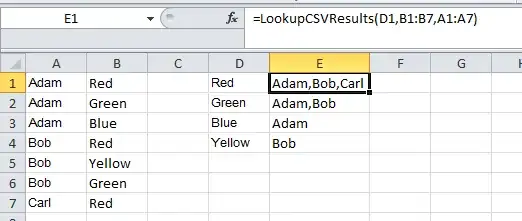I have two columns Key and Value (standard map)
There are duplicated keys. It is trivial to delete the duplicated keys (namely the delete duplicates button). But that would delete some useful data in the value column (or alternatively mess up the pairings).
What really should be done is for the data to be consolidated such that the values are concatenated based on duplicate keys. Ideally this would be done with a particular formatting in mind, but that is less important.
This seems relatively straightforward for numerical values, but less so for text based requirements.
E.g. http://www.extendoffice.com/documents/excel/1268-excel-combine-duplicate-rows-and-sum.html
I was hoping that summation would be equivalent to concatenation; but alas this does not seem to be the case.
